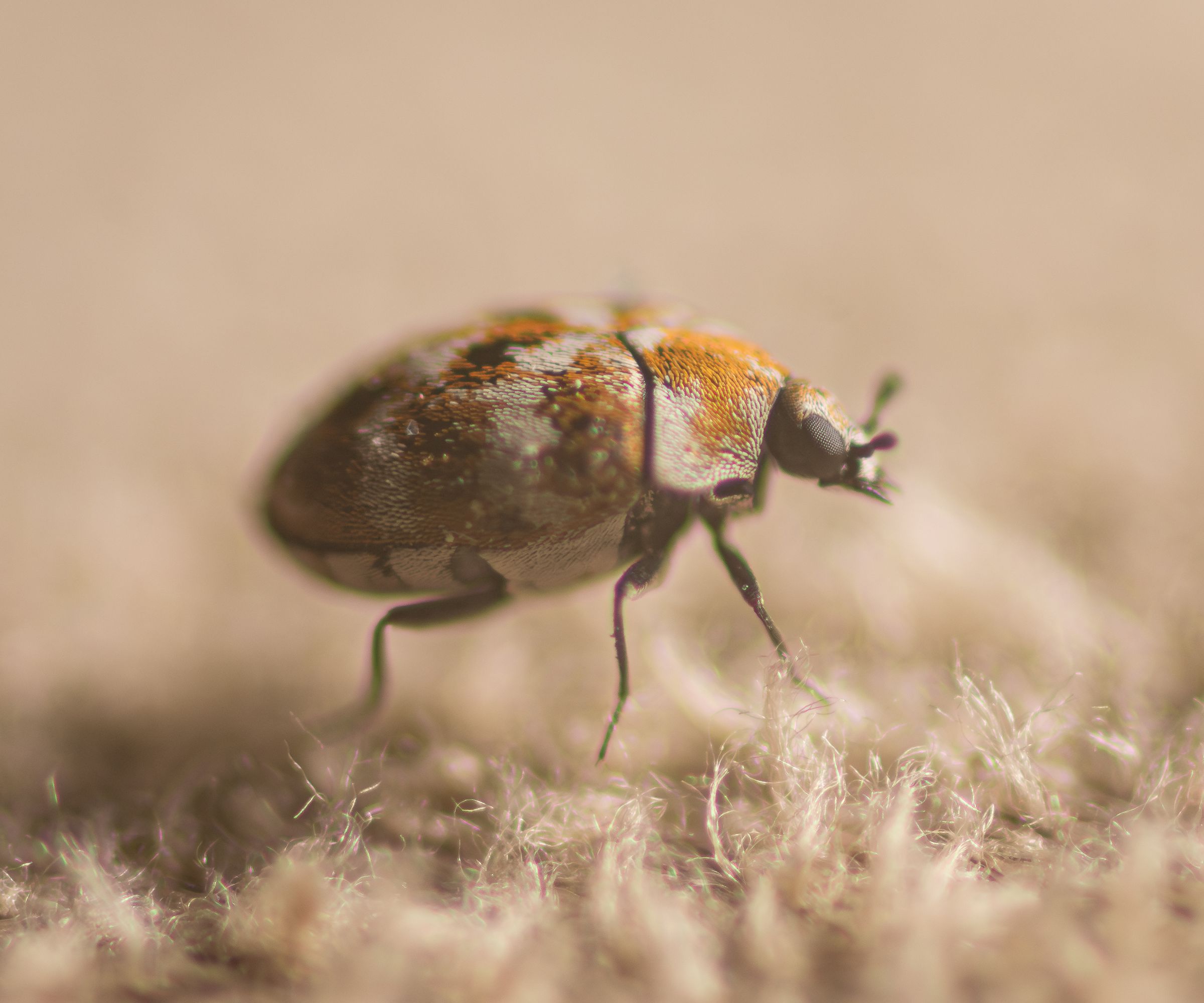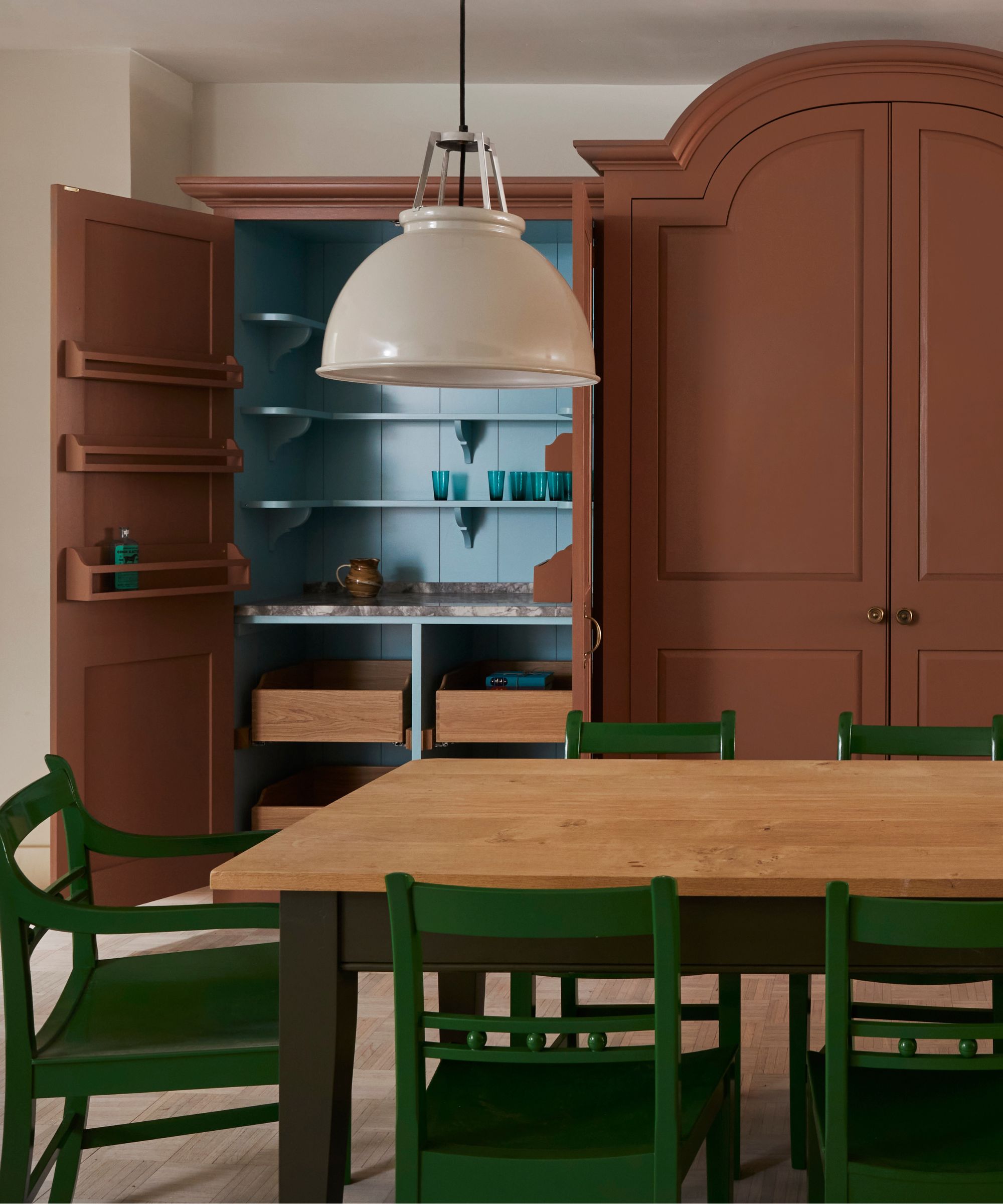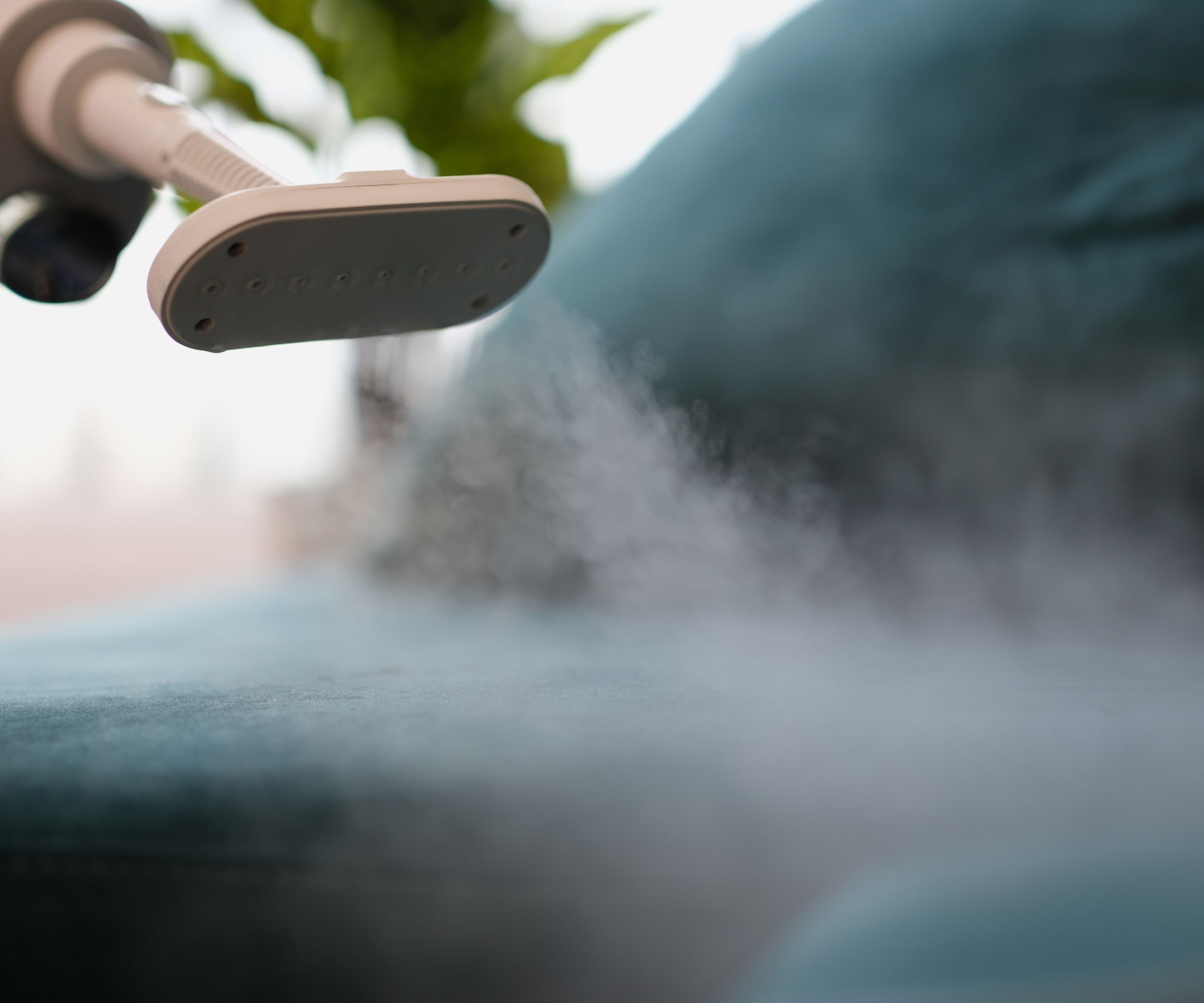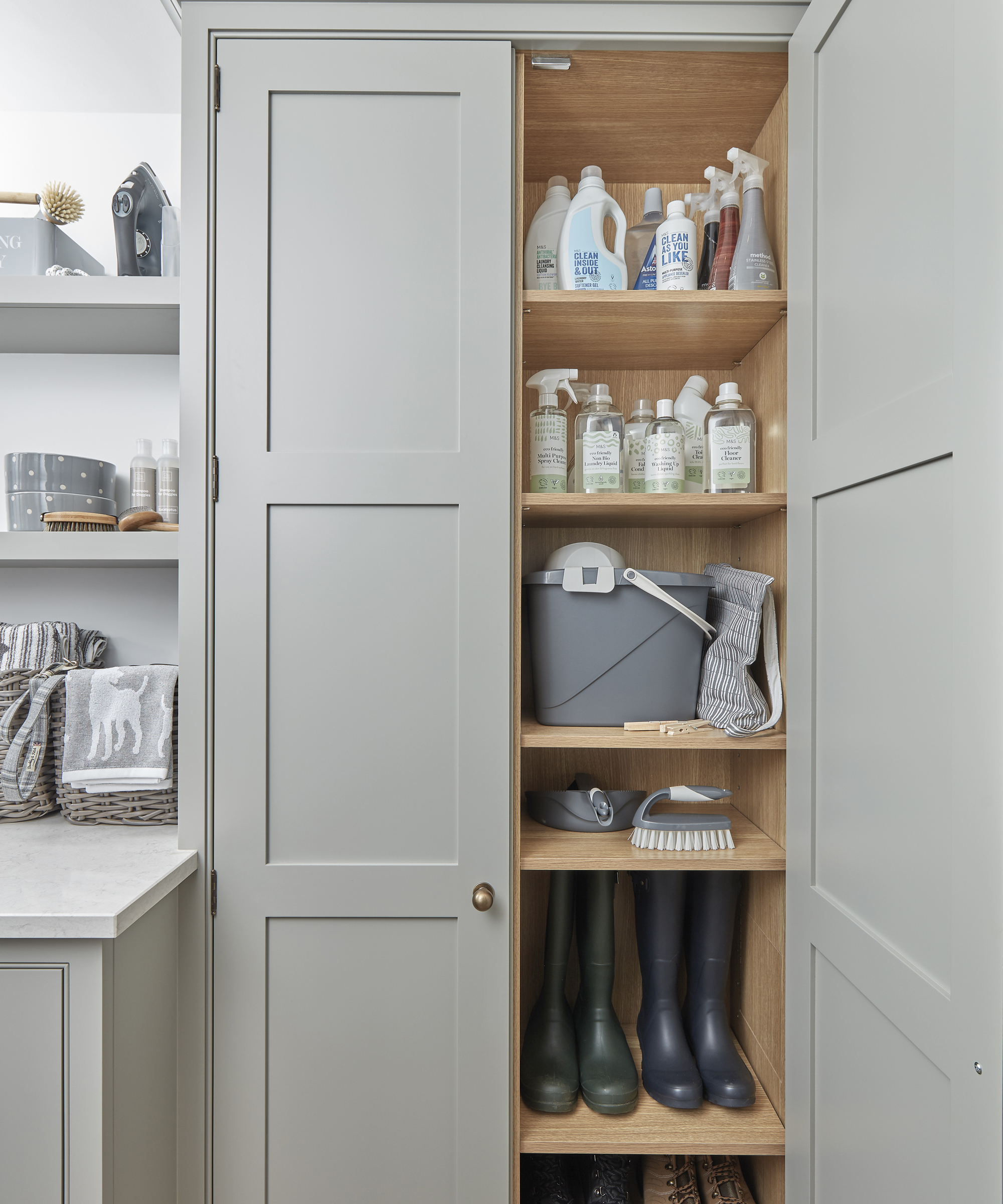5 simple ways to get rid of carpet beetles in your home – advice from pest control experts
Don't let your fabrics and food get consumed by these destructive pests; if you suspect an infestation, these steps can ensure your home remains safe and carpet-beetle free


Due to their size and persistence, carpet beetles can pose quite an issue if they infiltrate your home. With the ability to get through tiny gaps and likely to eat just about anything, these pests can wreak havoc on your carpets, clothes, and other fabrics. But fear not, as eliminating them from your home requires a thorough yet straightforward approach.
Identifying a carpet infestation is crucial. Look out for the insects themselves, their shredded skins, or larvae in dark, secluded places. Carpet beetles typically measure between 1.5-3.5 mm, have a round shape, and have white, golden-yellow, black patches and black legs.
Getting rid of carpet beetle larvae is a separate challenge, but first, it's essential to address the root issue. Follow these expert tips to effectively rid your home of carpet beetles.
How to get rid of carpet beetles

'Getting rid of any pest starts by finding out where it's most active and where it lives,' says Georgios Liakopoulos, pest exterminator at Fantastic Pest Control. 'The carpet beetle prefers dark places, damaged areas, or near food sources, like underneath furniture, in cabinets with dry food, and at the edge of carpets.'
If you suspect an infestation, inspect all likely areas and begin exterminating.
1. Remove clutter and obstacles

'First things first, you'll want to clear out the affected areas. I'm talking a full-blown evacuation of belongings,' says John Target, owner and Founder of Target Pest Control. 'This might sound like overkill, but trust me, it's necessary. Carpet beetles love to hide in the nooks and crannies of your home, so decluttering gives them fewer places to hide.'
2. Vacuum everywhere
'Next up, grab your vacuum cleaner and go to town,' says John Target. 'You'll want to vacuum every inch of the affected areas, paying special attention to corners, under furniture, and other out-of-the-way spots.
'Carpet beetles aren't fans of the spotlight, so shine a light in those dark places and vacuum thoroughly. Direction matters here; always vacuum towards the door to avoid spreading any larvae or eggs back into the room.'
3. Purge infested items
'Throw away any fabric items such as clothing that have extensive carpet beetle damage,' advises Georgios Liakopoulos. 'Even if you're tempted to keep stuff like this, carpet beetles or their eggs may hide within the fabric.'
Remove any food you think is a beetle target or shows signs of being contaminated.
4. Wash and heat treat

'Carpet beetle eggs are quite resilient, but they can't stand high temperatures,' explains John Target. So, the best way to get rid of these beetles is by either machining washing items, using hot, soapy water, or a steam cleaner.
'For anything fabric that can be machine washed, crank that temperature up to at least 60°C (140°F) to ensure you're not only cleaning but also killing any beetles, larvae, and eggs,' recommends John Target.
'You can use a steam cleaner to kill carpet beetles and their eggs by penetrating deep into carpets and fabrics.' This includes anywhere they may be hiding, such as steam cleaning a couch or steam cleaning a mattress.
5. Use special treatments

Using treatments in infested areas and surrounding areas will eliminate the beetles once and for all and prevent future damage to your carpets and belongings. The best solution will depend on what you are using the solution on and risk factors for other animals and insects based on the solution's toxicity. Here are some popular choices:
Vinegar and water
'For items that can't be washed, you can't beat a tried-and-trusted mix of vinegar and water,' recommends John Target. 'The reason cleaning with vinegar works so well is that it is a natural disinfectant and pest repellent – beetles hate the smell and acidity.
'Mix one part vinegar to three parts water and put this solution into a spray bottle. Spray it on carpets, upholstery, and anywhere you can't reach with a vacuum or washing machine.'
Boric acid
'Boric acid kills beetles, larvae, and eggs, so sprinkle it on your carpet liberally and vacuum it up after two or three hours,' explains Georgios Liakopoulos. 'Boric acid is deadly for insects because it dries out their bodies. But if you decide to use boric acid, be sure to keep pets away.'
Dust boric acid on areas that are harder to reach. You can use this Duda Energy powder boric acid from Walmart.
Diatomaceous earth
'If you're dealing with a serious infestation, diatomaceous earth can be your secret weapon. This naturally occurring, powdery substance is harmless to humans and pets but lethal to carpet beetles,' explains John Target. 'Diatomaceous earth is a natural powder made from fossilized algae. It works by dehydrating and killing carpet beetles in areas prone to infestation, like underneath furniture and along baseboards.'
'Sprinkle a thin layer around the edges of your rooms, under furniture, and in closets. The sharp edges of diatomaceous earth particles cut through the beetles' exoskeletons, dehydrating and killing them. Leave it for a few days, then vacuum it up – along with the dead beetles.'
We recommend this Harris Products Group diatomaceous earth from Walmart.
Hormone-based glue traps
Hormone-based glue traps are another great solution for the most stubborn infestations. These are designed with synthetic pheromones that mimic the beetles' natural hormones, attracting them to the sticky trap.
These are best placed strategically in areas where drugstore beetles are likely to be most active. Since these target the beetles specifically, these traps minimize the risk of harming other, beneficial insects or non-targeted species, for example, if you are using them outside, making this an environmentally friendly option for pest control.
Insecticide
In cases where infestations are persistent, you can use insecticides specifically designed to target carpet beetles. These can come in spray, powder, or fogger form and should be applied to manufacturer instructions. These work quickly to reduce the beetle population and prevent further damage they may otherwise cause.
When using carpet beetle irradiating insecticide, be sure to wear protective equipment, ventilate the area during and after treatment, and keep children and pets away from the treated surfaces until they have dried completely.
If you are unsure whether you can keep your family and pets safe from insecticides, you might want to call pest control instead.
FAQs
What materials are carpet beetles attracted to?
Adult carpet beetles survive on flower pollen, but carpet beetle larvae will feast on all manner of things, including fur, silk, wool, leather, and feathers. These natural materials all contain keratin, an easily digestible protein source for carpet beetles, which is why they are drawn to them.
'Most of the time, carpet beetles will pass up on synthetic materials and cotton, however, if those fabrics are blended with wool, or if they are stained with food or body oils, they may be attracted to that,' explains Brett Bennett, Director of Operations, PURCOR Pest.
Additionally, carpet beetles prefer natural fibers such as wool and leather. Pay close attention to these items if you are worried you might have the beginnings of a carpet beetle infestation, and clean these carpet beetle-prone areas frequently.
Once you have gone through these steps, the final and most important stage in preventing further issues is prevention. Regularly inspect and clean your home, especially those out-of-sight areas. Seal cracks and crevices where beetles might enter, and keep natural fiber items and clothes in airtight containers. Wash your clothes, vacuum regularly, and clear pet hair accumulations from baseboards and vents.
Sign up to the Homes & Gardens newsletter
Design expertise in your inbox – from inspiring decorating ideas and beautiful celebrity homes to practical gardening advice and shopping round-ups.

Lola Houlton is a news writer for Homes & Gardens. She has been writing content for Future PLC for the past six years, in particular Homes & Gardens, Real Homes and GardeningEtc. She writes on a broad range of subjects, including practical household advice, recipe articles, and product reviews, working closely with experts in their fields to cover everything from heating to home organization through to house plants. Lola is a graduate, who completed her degree in Psychology at the University of Sussex. She has also spent some time working at the BBC.
-
 Reese Witherspoon upgraded a small corner into a cozy reading nook – designers say you can replicate her 'ultimate little escape' (from $18)
Reese Witherspoon upgraded a small corner into a cozy reading nook – designers say you can replicate her 'ultimate little escape' (from $18)'It’s all about comfort, calm, and just the right amount of cozy': You only need three things to follow Reese's example – and it's not only for book lovers
By Megan Slack
-
 Can my neighbor paint their side of my fence? Here's the legal regulations you need to know to avoid disputes, plus when to take action
Can my neighbor paint their side of my fence? Here's the legal regulations you need to know to avoid disputes, plus when to take actionThere's no simple answer to this question, so it's important to do your research before taking action
By Tenielle Jordison